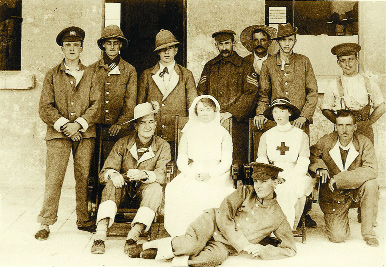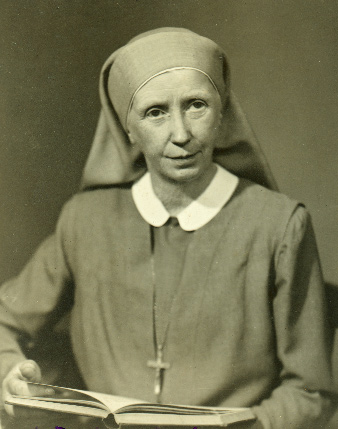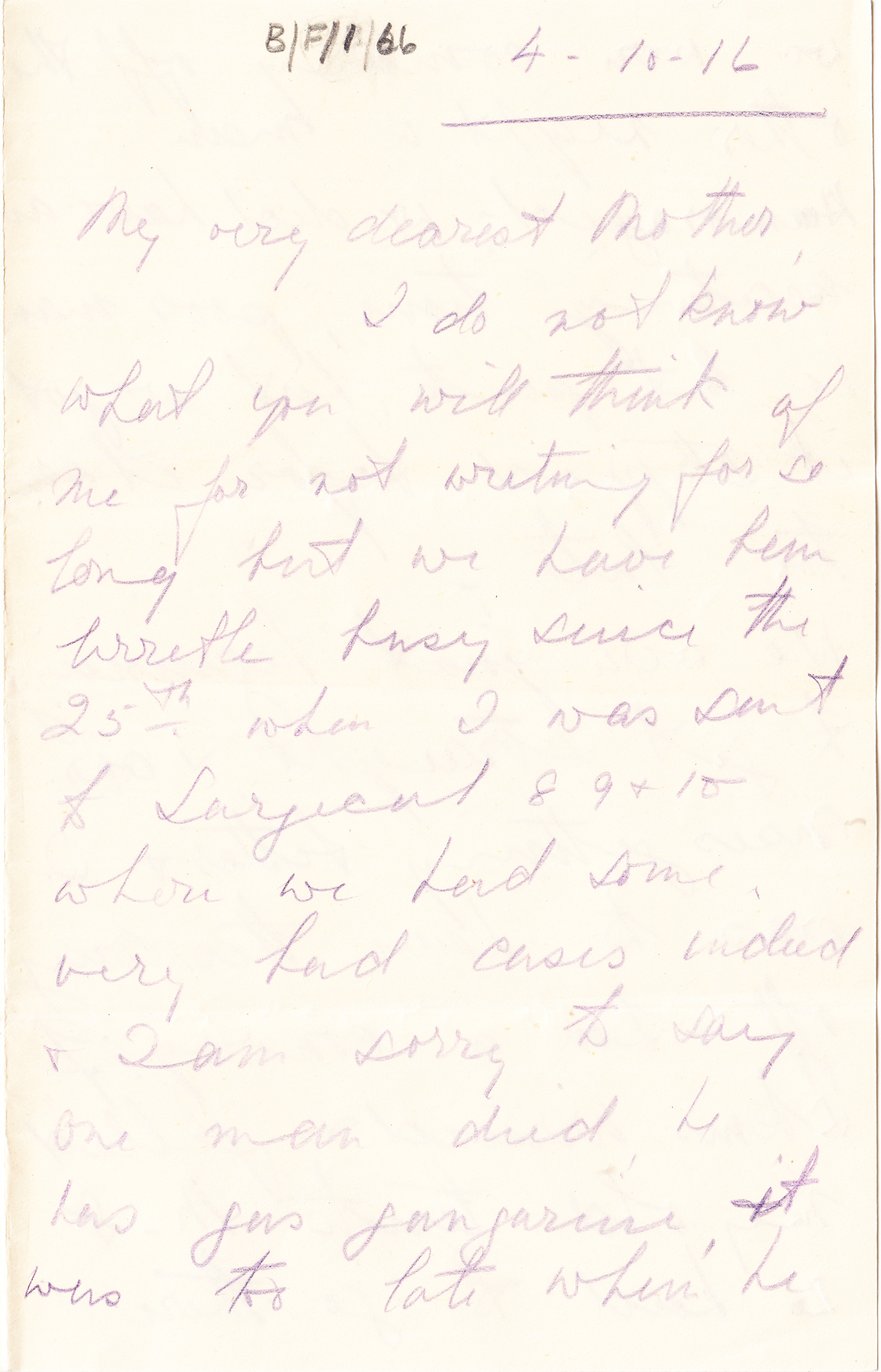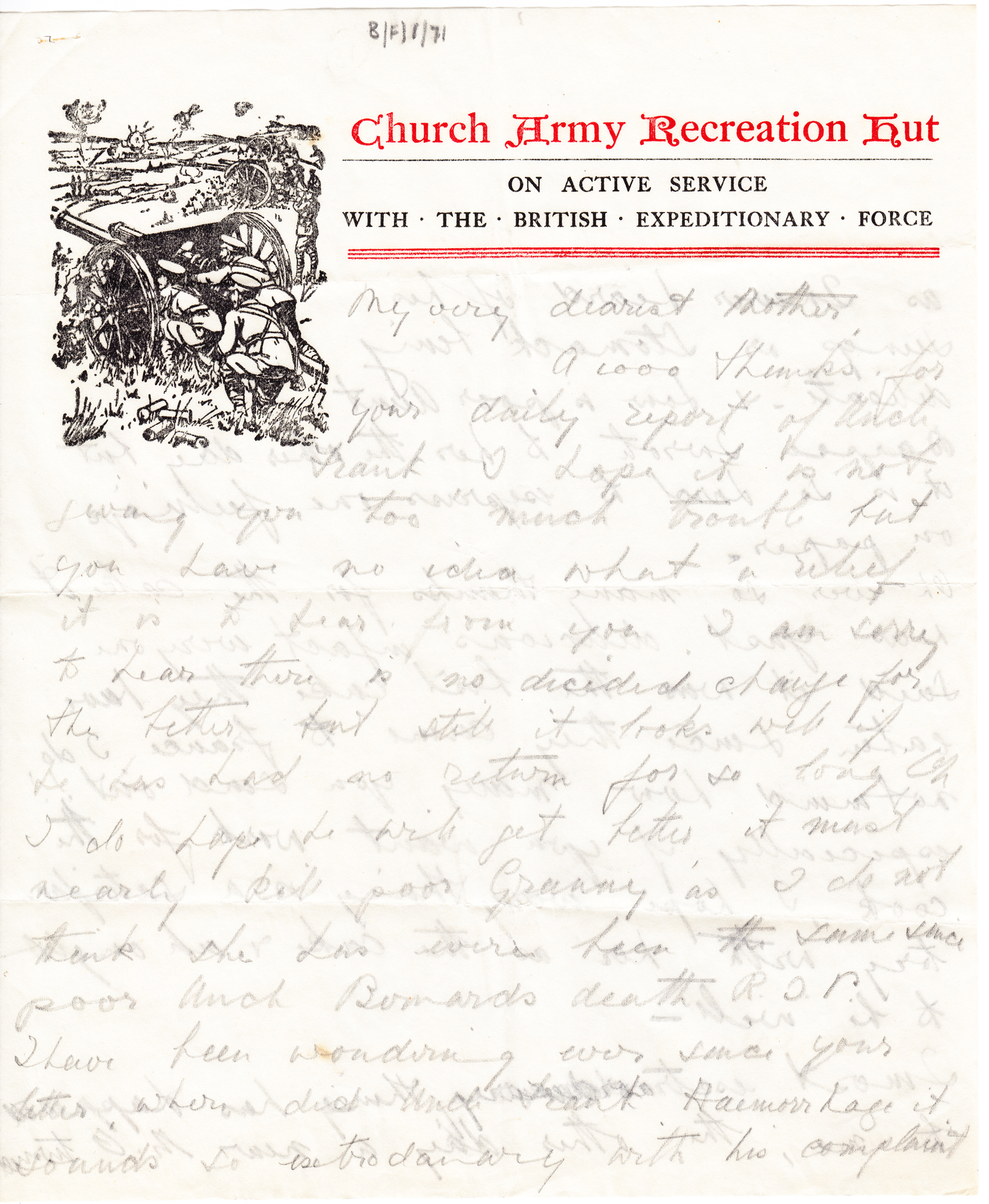Featured Post by Hannah Healy
At the height of World War 1 over 375,000 letters were being processed a day and 12.5 million letters left the British home depot every week[1]. During the First World War letters to and from the front served an extremely important purpose. Letters were one of the sole comforts a soldier at the front could count on and their replies reassured those waiting at home that their loved ones were safe and well. Marie Martin and her family were no exception.

Marie Martin was born on 25 April 1892 to Thomas and Mary Martin in Glenageary, Co. Dublin. She was the second of twelve children. The outbreak of the First World War proved to be a watershed for both Marie and her family. Four of the Martin children directly contributed to the war effort: Tommy and Charlie as soldiers and Marie and Ethel as nurses with the Volunteer Aid Detachment (VAD). Both Tommy and Charlie were wounded more than once but Charlie proved to be the only casualty from the Martin family. He died on 8 December 1915 aged just twenty years old[2]. Charlie’s name appears frequently in Marie’s letters home after his disappearance from the front in 1915.

Marie’s contribution came as a VAD nurse. By July 1914, 46,881 women were registered as VADs[3]. Founded in 1909 under the joint sponsorships of the British Red Cross and the Order of St John of Jerusalem, during the First World War they assisted professional nurses in hospitals. They were posted to both convalescent and military hospitals in Britain and could apply for transfers for overseas service after a fixed period[4]. The organisation had detailed regulations of dress, discipline and duties. British Red Cross VAD nurses had to be between twenty-one and forty-eight years of age (initially twenty-three to thirty-eight) and have done some basic nursing training. They were employed at a salary of twenty pounds per year, wore a uniform with a distinct red cross on the breast and cap, had coats of blue and were under military discipline. Their instructions were ‘that no VAD member should question what work she does for the sick and wounded, whether sailors, soldiers or civilians'[5].
Many VADs explicitly equated their service in the wards with the service of their brothers in the trenches[6]. Although their contribution is often overlooked in deference to the soldiers the role of these VAD nurses is not to be dismissed. Aside from providing much needed medical care for wounded men, VAD nurses helped to keep up morale by reminiscing with the men about home. Marie Martin always did her best to ensure that her patients were well looked after and often wrote to her mother Mary asking her to send on some home comforts for the men, such as cakes and tobacco[7]. In all, the British Red Cross employed 17,367 VAD nurses from 1914 to 1919; of these 2,812 served overseas and 128 were killed[8].

Marie Martin’s letters are an invaluable source brimming with information and exposing the realities of everyday life at the front for a young Irish nurse. Her letters reveal the adventurous spirit that war service inspired and record the darker side of home sickness and depression that could accompany extended service overseas[9]. Similarly, Marie’s letters provide us with glimpses into the lives of the soldiers she cared for. Marie’s own story, of her missing brother Charlie and her constant search for information regarding his whereabouts, highlight the tragic nature of life at the front and the fracturing of families separated by wartime service. The horrors of chemical warfare are given a new perspective when Marie describes witnessing the death of a soldier due to gas gangrene[10]. However, the stories are not all tragic as Marie’s letters capture the pride expressed by Irish soldiers and admiration for their heroic deeds: ‘yes certainly the Irish Div[ision] was magnificent in the taking of Ginchy & I am glad to say the 16th Div. is absolutely Irish’[11].
While Marie’s letters primarily relate to the war effort they also contain information that relates to a wide range of topics that pervade Irish history, such as faith, emigration and politics. The role of faith in the lives of Irish service men and women is continually present in Marie’s letters; whether she is discussing the arrival of a new chaplain, attending mass with the men or simply accepting that the death of her brother must be God’s will[12]. Despite the fact that Marie’s posting is overseas she also manages to keep up to date on current affairs in Ireland. One of her letters refers to a speech made by John Redmond on 6 October 1916 on the issue of conscription[13]. Conscription had been introduced into the rest of Britain in 1916 and with only four thousand Irishmen volunteering for military service between October 1916 and January 1917 the likelihood of extending conscription to Ireland in 1916 became a very real possibility[14]. Due to the public backlash following the execution of the rebel leaders of the Easter Rising it was decided not to extend conscription to Ireland at that time, although the issue would come to the forefront again in 1918. The ever present concept of emigration and the Irish diaspora also makes an appearance in Marie’s letters. Writing to her mother on 20 October 1916 Marie informs her that she is to be introduced to a soldier from the Australian army who believes he is her second cousin[15].
service men and women is continually present in Marie’s letters; whether she is discussing the arrival of a new chaplain, attending mass with the men or simply accepting that the death of her brother must be God’s will[12]. Despite the fact that Marie’s posting is overseas she also manages to keep up to date on current affairs in Ireland. One of her letters refers to a speech made by John Redmond on 6 October 1916 on the issue of conscription[13]. Conscription had been introduced into the rest of Britain in 1916 and with only four thousand Irishmen volunteering for military service between October 1916 and January 1917 the likelihood of extending conscription to Ireland in 1916 became a very real possibility[14]. Due to the public backlash following the execution of the rebel leaders of the Easter Rising it was decided not to extend conscription to Ireland at that time, although the issue would come to the forefront again in 1918. The ever present concept of emigration and the Irish diaspora also makes an appearance in Marie’s letters. Writing to her mother on 20 October 1916 Marie informs her that she is to be introduced to a soldier from the Australian army who believes he is her second cousin[15].
Having served in military hospitals in Malta, Leeds, and France, Marie returned to Dublin following the end of hostilities and decided that her vocation lay with the sick. In 1937 Marie became the founder of the Medical Missionaries of Mary, after twenty years of struggling to bring this dream to fruition[16]. Marie Martin’s involvement in the First World War not only had a significant impact on her own life but also on the lives of those she helped and cared for. Her letters continue to provide a new and interesting perspective of the First World War through the eyes of an Irish nurse.
[1] BBC website, ‘How did 12 million soldiers reach British soldiers every week?’ (http://www.bbc.co.uk/guides/zqtmyrd) [Date accessed: 7 Jul. 2014].
[2] The Diary of Mary Martin (http://dh.tcd.ie/martindiary/?page_id=336) [Date accessed: 7 Jul. 2014].
[3] Ian Martin, “‘When Needs Must’: The Acceptance of Volunteer Aids in British and Australian Military Hospitals in World War I.” Health and History Vol.4 No.1 (2002), p.88.
[4] Ibid, 89.
[5] Ibid.
[6] Janet S.K. Watson, “Khaki Girls, VADs, and Tommy’s Sisters: Gender and Class in First World War Britain.” The International History Review Vol. 19 No. 1 (1997), p.22
[7]Marie Martin to Mary Martin, 26 Jun. 1916 (Medical Missionaries of Mary, B/F/1/45/1916/06/26).
[8] Ian Martin, Health and History, p. 89.
[9] Marie Martin to Mary Martin, 7 Sep. 1916 (Medical Missionaries of Mary, B/F/1/60/1916/09/07).
[10] Ibid, 4 Oct. 1916, (Medical Missionaries of Mary B/F/166/1916/10/04)
[11] Ibid, 18 Sep. 1916, (Medical Missionaries of Mary B/F/1/62/1916/09/18)
[12] Ibid, 20 Oct. 1916, (Medical Missionaries of Mary BF169/1916/10/20)
[13]Ibid, 20 Oct. 1916, (Medical Missionaries of Mary BF169/1916/10/20)
[14] Alan Ward, ‘Lloyd George and the 1918 Irish Conscription Crisis’, The Historical Journal Vol. 17 No. 1 (1974), p. 108.
[15] Marie Martin to Mary Martin, 20 October 1916, (Medical Missionaries of Mary BF169/1916/10/20).
[16] The Diary of Mary Martin (http://dh.tcd.ie/martindiary/?page_id=336) [Date accessed: 7 July 2014].
Bibliography
Martin, Ian, “‘When Needs Must’: The Acceptance of Volunteer Aids in British and Australian Military Hospitals in World War I.” Health and History Vol.4 No.1 (2002), pp. 88-98
Watson, Janet, “Khaki Girls, VADs, and Tommy’s Sisters: Gender and Class in First World War Britain.” The International History Review Vol. 19 No. 1(1997), pp.32-51.
Frances Clarke, ‘Martin, Máire (Marie, Mary) Helena (‘Mother Mary)’, in James McGuire and James Quinn (ed), Dictionary of Irish Biography. (Cambridge, 2009).
BBC Website, ‘How did 12 million letters reach British soldiers every week’ (http://www.bbc.co.uk/guides/zqtmyrd) [Date accessed: 7 July 2014].
The Diary of Mary Martin (http://dh.tcd.ie/martindiary/?page_id=336) [Date accessed: 7 July 2014].